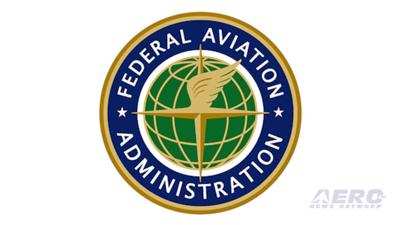Belaboring the Obvious
Citing what he referred to as an "uptick" in recent aviation incidents, Secretary of Transportation Pete Buttigieg called upon attendees of the Federal Aviation Administration’s 15 March safety summit to investigate and address the "root causes” of a series of runway incursions and near collisions which have occurred at numerous U.S. airports since the beginning of 2023.

Buttigieg stated: "We are particularly concerned because we have seen an uptick in serious close calls.”
Convened in McLean, Virginia and attended by more than two-hundred professionals representing vast tracts of the aerospace industry, the FAA summit addressed aviation-safety-related concerns ranging from overstressed pilots and flight attendants to inadequate air traffic control technology.
An FAA spokesman set forth: "Pilots and flight attendants expressed concerns that they continue to feel stress in the workplace, including long work hours under adverse conditions. A primary concern was workforce experience and attrition."
The FAA summit, the first of its kind since 2009, marked the commencement of a sweeping safety review the agency has undertaken in the wake of seven U.S. near-miss incidents that transpired since 01 January 2023. The most recent such occurrence took place on 07 March at Washington D.C.’s Reagan National Airport (DCA) and saw Republic Airways Flight 4736 cross a runway, without clearance, upon which United Airlines Flight 2003 was then departing.
The FAA stated: "An air traffic controller noticed the situation and immediately canceled the takeoff clearance for the United flight.”
The agency asserted it is seeking "ways to address areas where the existing safety system could be tightened.” Currently, the FAA is endeavoring to identify new technologies by which air traffic controllers might be more alacritously and urgently alerted of developing aircraft traffic conflicts on both the ground and in the air.

An agency representative remarked: "The FAA issued a call to industry to help identify technologies that could augment existing capabilities of surface surveillance equipment and deploy this technology to all airports with air traffic control services.”
In late March, the FAA will hold a workshop during which attendees will examine the mitigation of air traffic risks at the U.S.’s two-hundred busiest commercial airports.
Acting FAA Administrator Billy Nolen stated: "There is no question that aviation is amazingly safe, but vigilance can never take the day off. We must ask ourselves difficult and sometimes uncomfortable questions, even when we are confident that the system is sound."
Buttigieg, who possesses little knowledge nor experience germane to airport or air traffic operations, nevertheless tasked aviation stakeholders with identifying "a very concrete diagnosis and specific action steps" to reduce the number of near collisions.” Buttigieg harangued: "It would be one thing if we found a certain piece of technology in the cockpit or a certain control tower where there were a lot of issues; but instead, what we're finding is that pilots, ground crews, and controllers alike seem to be experiencing this uptick. Some have described it as a kind of rust."
The Secretary of Transportation continued: "We're not going to wait for something still worse to happen to act now." Buttigieg suggested the efforts he’d rhetorically prescribed ought "make sure we can save lives at airports around the country."
In his opening remarks at the 15 March FAA summit, Buttigieg—in addition to pointing out the gathering was "about the entire system, which means it's about all of us,”—set forth that the assemblage was to be the first in a series of coordinated events the FAA will officiate for purpose of determining what current airport and air traffic practices have proved effective and what "new steps" need be taken to ensure the safety of both commercial and private aircraft operations. That U.S. national airspace, air traffic, and airport systems have historically functioned with minimal incident and have only recently been plagued by repeated and egregious errors and oversights suggests a number of concerning possibilities, principal among which are: a system-wide dearth of expertise, a degradation of workplace culture conducive to diminished professionalism, and hiring practices predicated upon notions of identity and equity instead of individual qualities and qualifications.
Airlines for America president and CEO Nick Calio stated: "I don't want to speculate a lot on what's happened there, because they're all under investigation. And we're all trying to determine what is going on. Is this a trend? Is this a pattern?"

National Air Traffic Controllers Association Union president Rich Santa remarked: "Unfortunately, we have a staffing issue right now, as air traffic controllers. We are 1,200 certified professional controllers less now than we were ten years ago. It's time for us to accurately and adequately staff the facilities."
NTSB chair Jennifer Homendy advised summit participants that her agency had identified a common issue with six of the seven runway incursion incidents under investigation. In each case, one or both of the involved aircrafts’ Cockpit Voice Recorders (CVR) had been overwritten—a condition that precluded investigation of data recorded by the devices.
Homendy remarked: "All federal agencies here today need to ask: ‘Are we doing everything possible to make our skies safer?’ We've been asking ourselves that very question at the NTSB.”
 ANN's Daily Aero-Term (04.24.24): Runway Lead-in Light System
ANN's Daily Aero-Term (04.24.24): Runway Lead-in Light System ANN's Daily Aero-Linx (04.24.24)
ANN's Daily Aero-Linx (04.24.24) Aero-FAQ: Dave Juwel's Aviation Marketing Stories -- ITBOA BNITBOB
Aero-FAQ: Dave Juwel's Aviation Marketing Stories -- ITBOA BNITBOB Classic Aero-TV: Best Seat in The House -- 'Inside' The AeroShell Aerobatic Team
Classic Aero-TV: Best Seat in The House -- 'Inside' The AeroShell Aerobatic Team Airborne Affordable Flyers 04.18.24: CarbonCub UL, Fisher, Affordable Flyer Expo
Airborne Affordable Flyers 04.18.24: CarbonCub UL, Fisher, Affordable Flyer Expo





